Saffron

This is saffron. The most expensive spice in the world. I found this add for it today: Sale!!! 100 grams of saffron. Was €442.99 EUR now only €265.99 EUR!!!
To jest szafran. Najdroższa przyprawa świata. Znalazłem ten dodatek do tego dzisiaj: Wyprzedaż !!! 100 gramów szafranu. Było 442,99 €, teraz tylko 265,99 € !!!
The vivid crimson stigmas, are collected and dried for use mainly as a seasoning and colouring agent in food. The reason the spice is so expensive is that huge number of flowers are needed to produce a small quantity of spice… And they have to be picked and processed by hand…
This is what the crocus plants look when found in nature.
Tak wyglądają rośliny krokusów, gdy występują w naturze.
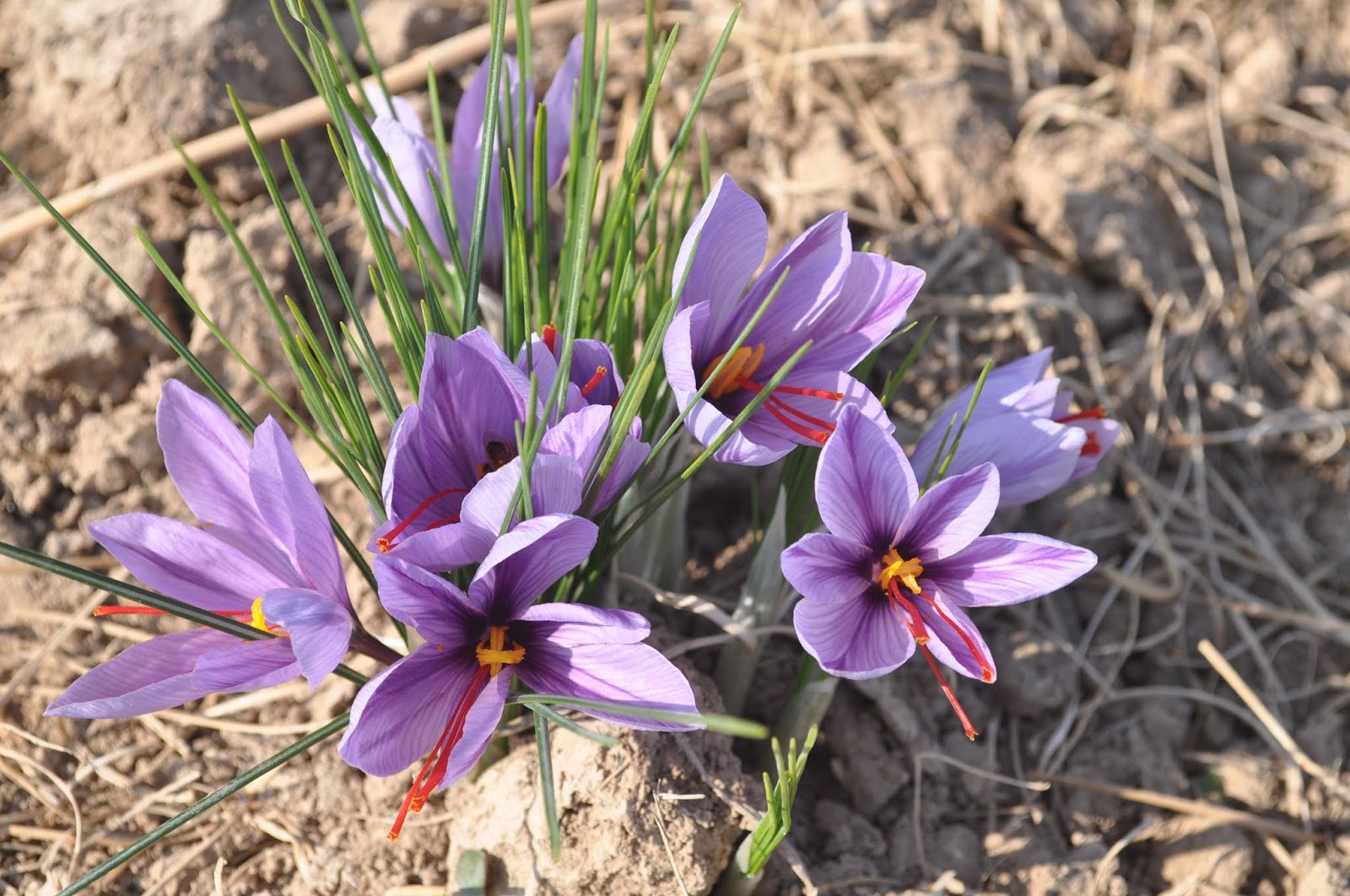
And this is what crocuses look when like when depicted on Minoan frescoes. This scene called „The Saffron Harvesters”, was found in the Minoan settlement on island of Santorini to the north of Crete. You can clearly see the bunches of crocus flowers growing out of rocky ground…
A tak wyglądają krokusy na freskach minojskich. Ta scena zwana „Zbieracze szafranu” została znaleziona w osadzie minojskiej na wyspie Santorini na północ od Krety. Wyraźnie widać bukiety krokusów wyrastające ze skalistego podłoża …
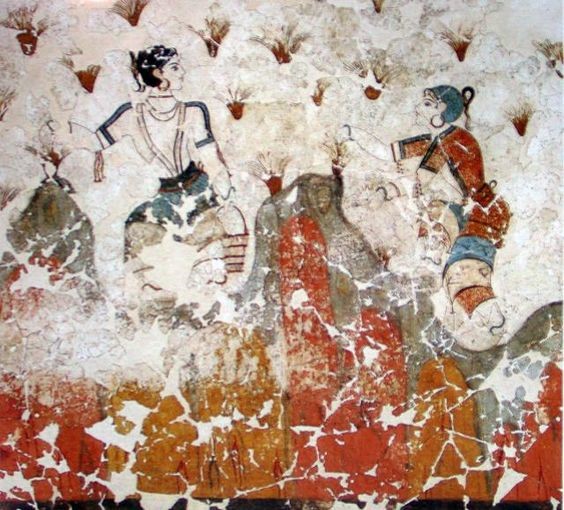
As I said in my post about Minoan goat mythology, Cretan crocus, the ancestor of all the saffron crocuses, starts flowering in October-November and flowers throughout winter.
Jak wspomniałem w swoim poście o mitologii kozy minojskiej, krokus kreteński, przodek wszystkich krokusów szafranowych, zaczyna kwitnąć w październiku-listopadzie i kwitnie przez całą zimę.
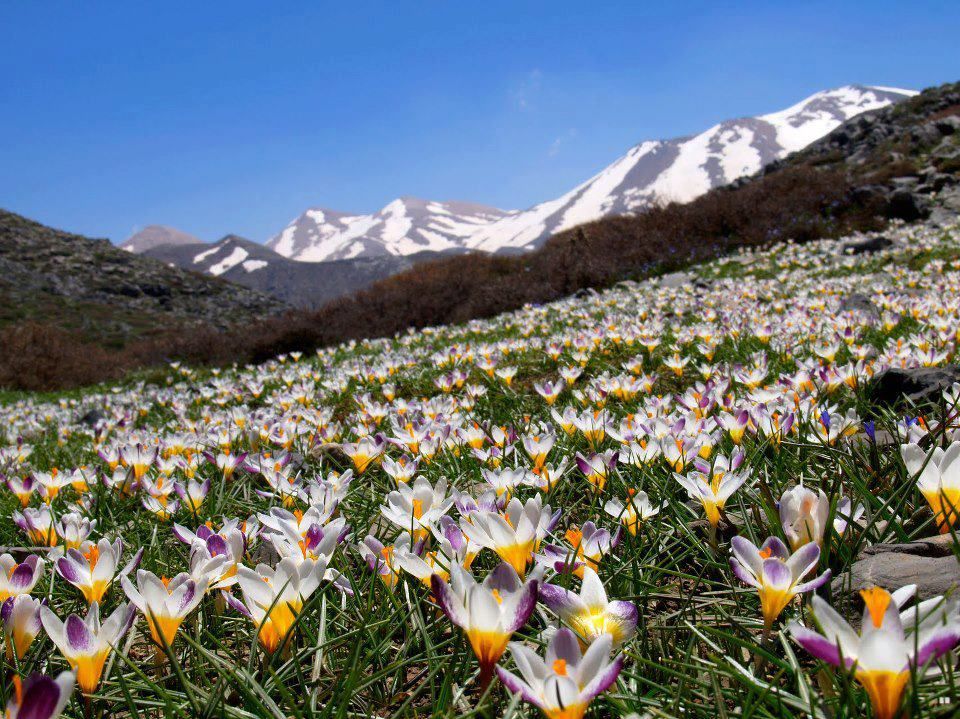
At the beginning of rain season, when Ibex goats mate and olives are ripe for picking…Which is all depicted on this Minoan fresco…
Na początku pory deszczowej, kiedy kozy Ibex kojarzą się i oliwki są dojrzałe do zerwania … Wszystko to jest przedstawione na tym minojskim fresku …
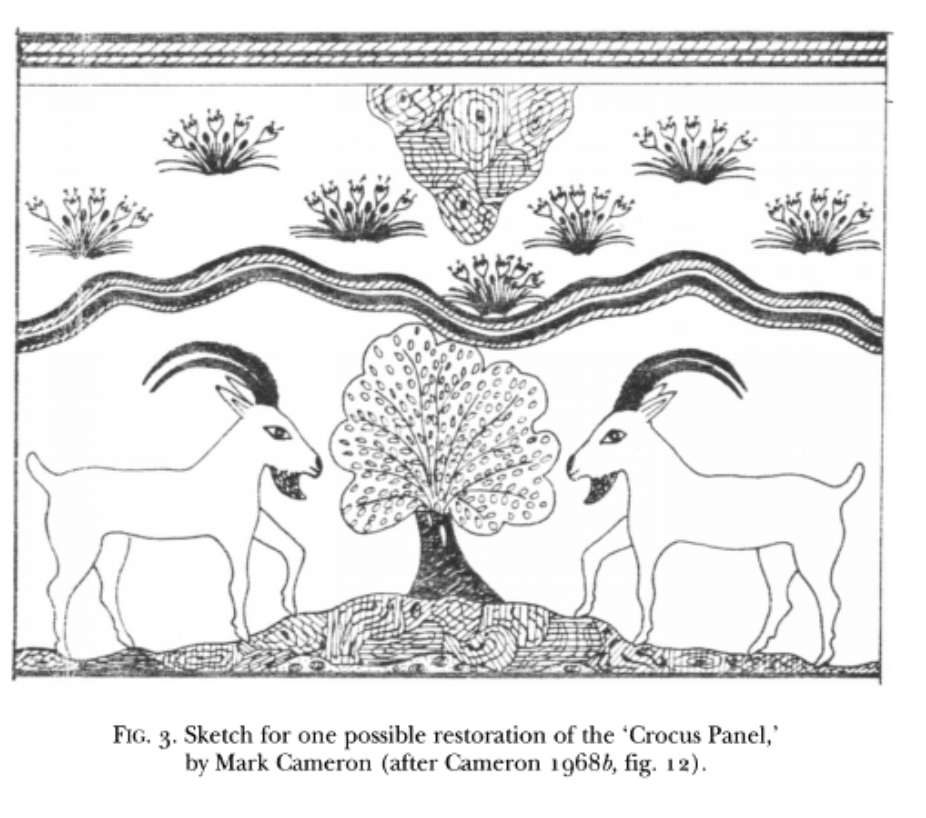
So the saffron picking scenes depicted on Minoan frescoes all take place during the winter starting in October-November. During the season dominated by The Goddess…Why do we only see women picking crocus flowers? Maybe this was one of those sacred, female only jobs, protected by taboos…
Tak więc sceny zbierania szafranu przedstawione na minojskich freskach mają miejsce zimą, począwszy od października do listopada. W sezonie zdominowanym przez Boginię … Dlaczego widzimy tylko kobiety zbierające kwiaty krokusów? Może to była jedna z tych świętych prac, tylko dla kobiet, chroniona tabu …
Well stigmas are female sexual organs of the crocus flower. No wonder picking saffron was female only activity. I would bet that both crocus and saffron were seen as holy and were dedicated to The Goddess…
This is a reconstruction drawing of a room in the complex of Akrotiri. This figure is interpreted as The Goddess overseeing the harvesting of the Saffron.
To jest rysunek rekonstrukcyjny pomieszczenia w kompleksie Akrotiri. Postać ta jest interpretowana jako Bogini nadzorująca zbiór szafranu.
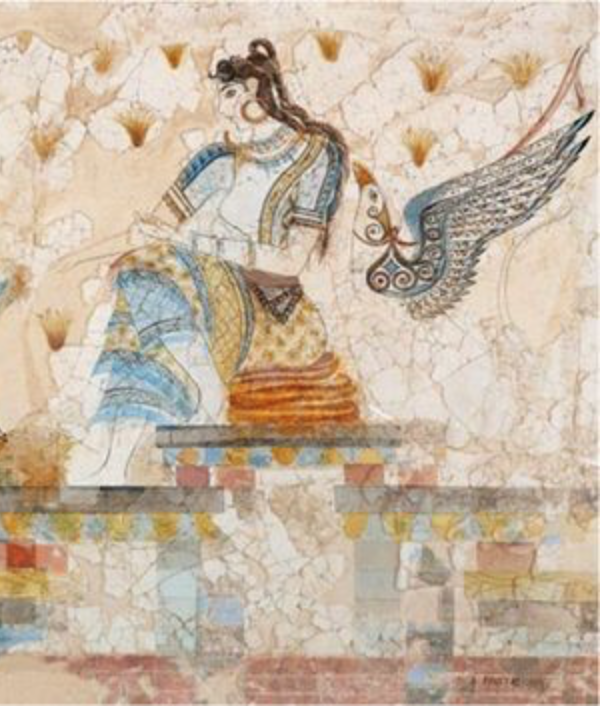
I would like to show you this detail in which you can see how she holds the saffron. She picks crimson crocus stigmas, and arranges them in in a bunch…
Chciałbym wam pokazać ten szczegół, w którym możecie zobaczyć, jak trzyma szafran. Zbiera szkarłatne znamiona krokusa i układa je w kilka wiązek …

Now here is something interesting. Wall painting from the Cult Center at Mycenae…What is this woman (I think she is The Goddess) holding in her hands? What are these crimson bunches?
W tym miejscu dochodzimy do czegoś interesującego. Malowidło ścienne z Centrum Kultu w Mykenach … Co ta kobieta (myślę, że jest Boginią) trzyma w dłoniach? Co to za szkarłatne wiązanki?
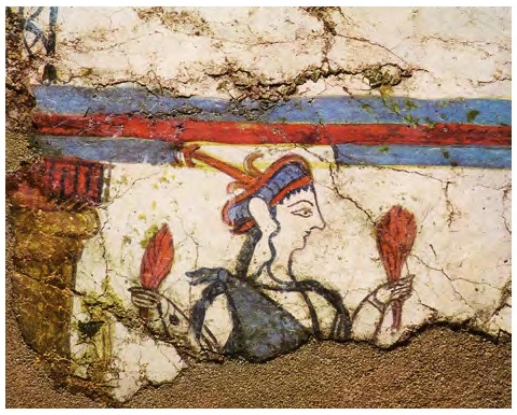
Well I would suggest they are saffron bunches. Bunches of female reproductive organs…Like this one:
Cóż, sugerowałbym, że są to wiązanki szafranu. Pęczki żeńskich narządów rozrodczych … Jak ten:
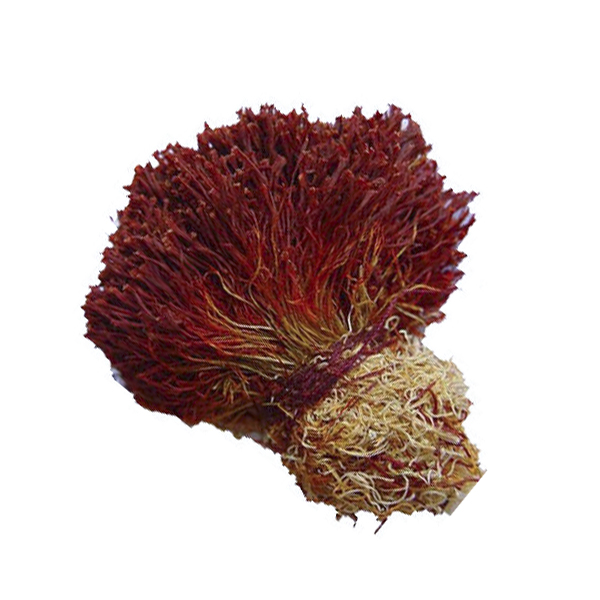
Here is why I waisted your time talking about saffron…This is „Lid of a pyxis originally containing face powder. Made in Ugarit, Syria, under Mycenaean influence, end of 2nd millennium BC„. Apparently depicting „Mistress of the animals feeding goats”…
Oto dlaczego straciłem czas na rozważania o szafranie … To jest „Pokrywka pudełka pierwotnie zawierającego puder do twarzy. Wyprodukowano w Ugarit w Syrii, pod wpływem mykeńskim, koniec drugiego tysiąclecia pne”. Najwyraźniej przedstawiający „Panią zwierząt karmiącą kozy” …
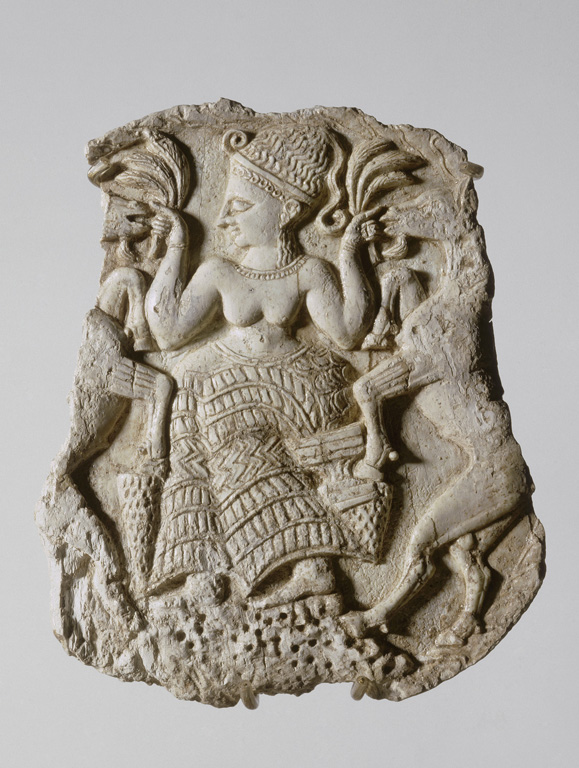
„Mistress of the animals feeding goats”??? Or The Goddess, holding bunches of saffron, in October-November, when crocus blooms, saffron is collected, when dancing Ibex Goats announce the arrival of rains, the arrival of the Dark, Wet, Yin, Goddess half of the year…
„Pani zwierząt karmiąca kozy”??? Lub Bogini, trzymająca bukiety szafranu, w październiku i listopadzie, kiedy kwitną krokusy, zbiera się szafran, kiedy tańczące koziołki ogłaszają nadejście deszczu, nadejście ciemności, wilgoci, Yin, Bogini połowy roku …
I think that „Mistress of the animals” is a figment of the imagination of the archaeologists who didn’t know what to make of all these images of a woman standing between animals…
Myślę, że „Pani zwierząt” jest wytworem wyobraźni archeologów, którzy nie wiedzieli, co zrobić z tymi wszystkimi elementami obrazu kobiety stojącej między zwierzętami …
But now that we know that goats, rams, lions, bulls, birds are all symbols marking a particular moment on the solar circle, I would propose that these images of women standing between animals depict The Goddess, Mother Earth, at particular moment in in the solar year…
Ale teraz, gdy wiemy, że kozy, barany, lwy, byki, ptaki są symbolami zaznaczającymi określony moment w kręgu słonecznym, proponuję, aby te obrazy kobiet stojących między zwierzętami przedstawiały Boginię, Matkę Ziemię, w określonym momencie roku słonecznego …
Like this depiction of the „Female Divinity between Lions” on Amygdaloid Gem, Mycenae.
Podobnie jak ten obraz „Boskość kobiety między lwami” na klejnocie Amygdaloid w Mykenach.
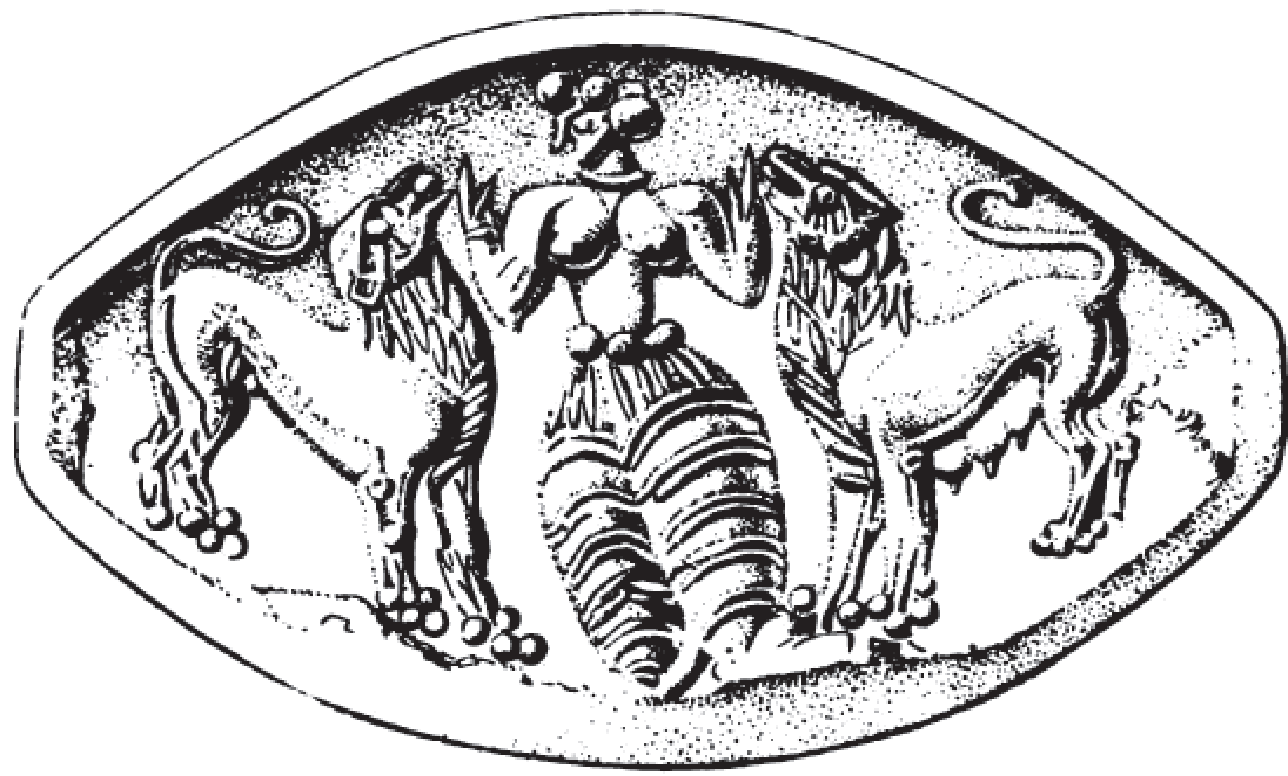
This is one of endless depictions of The Goddess depicting her either between the lions, standing on a lion or being driven in a chariot pulled by lions… Basically Mother Earth during the time when Eurasian lions start mating which is August – September or in Zodiac, Leo – Virgo… I talked about this in my post „Assumption of Mary„. The above gem actually shows a male and female lion, just in case there is any doubt what the image represents…🙂
Jest to jedno z niekończących się przedstawień Bogini, pokazujących ją między lwami, stojącą na lwie lub prowadzącą w rydwanie ciągniętym przez lwy … Zasadniczo Matkę Ziemię w czasie, gdy lwy euroazjatyckie zaczynają godować, czyli od sierpnia do września lub we wrześniu. Zodiak, Lew – Panna… Mówiłem o tym w poście „Wniebowzięcie Marii”. Powyższy klejnot faktycznie przedstawia dwa lwy, piszę na wszelki wypadek, żeby nie było wątpliwości, co przedstawia obraz …
So which animals do we find in the „Mistress of the animals” depictions? I know of Lions, Deer, Goat, Bird, Snake…I have never seen Bull…Any other ones that you know of?
Więc jakie zwierzęta znajdujemy na przedstawieniach „Pani zwierząt”? Wiem o Lwach, Jeleniu, Kozie, Ptaku, Wężu… Nigdy nie widziałem Byka… Jakieś inne, które znasz?
źródło: https://oldeuropeanculture.blogspot.com/2020/02/saffron.html
